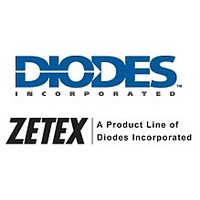AL9910SP-13 Diodes Inc, AL9910SP-13 Datasheet - Page 8

AL9910SP-13
Manufacturer Part Number
AL9910SP-13
Description
LED Drivers 300kHz 85 to 277Vac 10V Mosfet LED
Manufacturer
Diodes Inc
Series
-r
Datasheet
1.AL9910AS-13.pdf
(14 pages)
Specifications of AL9910SP-13
Constant Current
Yes
Constant Voltage
-
Topology
AC DC Offline Switcher, PWM
Number Of Outputs
1
Internal Driver
No
Type - Primary
Backlight, General Purpose
Type - Secondary
High Brightness LED (HBLED)
Frequency
25kHz ~ 300kHz
Voltage - Supply
85 V ~ 277 VAC
Voltage - Output
7.5V
Mounting Type
Surface Mount
Package / Case
8-SOIC (0.154", 3.90mm Width) Exposed Pad
Operating Temperature
-40°C ~ 85°C
Lead Free Status / Rohs Status
Details
Available stocks
Company
Part Number
Manufacturer
Quantity
Price
Part Number:
AL9910SP-13
Manufacturer:
DIODES/美台
Quantity:
20 000
AL9910/AL9910A
UNIVERSAL HIGH VOLTAGE HIGH BRIGHTNESS LED
DRIVER
Applications Information
(Continued)
Inductor Selection
The non-isolated buck circuit, Figure 1, is usually selected and it has two operation modes: continuous and discontinuous
conduction modes. A buck power stage can be designed to operate in continuous mode for load current above a certain level
usually 15% to 30% of full load. Usually, the input voltage range, the output voltage and load current are defined by the power
stage specification. This leaves the inductor value as the only design parameter to maintain continuous conduction mode.
The minimum value of inductor to maintain continuous conduction mode can be determined by the following example.
The required inductor value is determined from the desired peak-to-peak LED ripple current in the inductor; typically around
30% of the nominal LED current.
(
)
−
×
V
V
D
IN
LEDs
L =
Where D is duty cycle
(
)
×
×
0
3 .
I
f
LED
OSC
The next step is determining the total voltage drop across the LED string. For example, when the string consists of 10 High-
Brightness LEDs and each diode has a forward voltage drop of 3.0V at its nominal current; the total LED voltage V
is
LEDS
30V.
Dimming
The LED brightness can be dimmed either linearly (using the LD pin) or via pulse width modulation (using the PWM-D pin); or
a combination of both - depending on the application. Pulling the PWM_D pin to ground will turn off the AL9910. When
disabled, the AL9910’s quiescent current is typically 0.5mA (0.65 for AL9910A). Reducing the LD voltage will reduce the LED
current but it will not entirely turn off the external power transistor and hence the LED current – this is due to the finite
blanking period. Only the PWM_D pin will turn off the power transistor.
Linear dimming is accomplished by applying a 45 to 250mV analog signal to the LD pin. This overrides the default 250mV
threshold level of the CS pin and reduces the output current. If an input voltage greater than 250mV is applied to the LD then
the output current will not change.
The LD pin also provides a simple cost effective solution to soft start; by connecting a capacitor to the LD pin down to ground
at initial power up the LD pin will be held low causing the sense threshold to be low. As the capacitor charges up the current
sense threshold will increase thereby causing the average LED current to increase.
PWM dimming is achieved by applying an external PWM signal to the PWM_D pin. The LED current is proportional to the
PWM duty cycle and the light output can be adjusted between zero and 100%.. The PWM signal enables and disables the
AL9910 - modulating the LED current. The ultimate accuracy of the PWM dimming method is limited only by the minimum
gate pulse width, which is a fraction of a percentage of the low frequency duty cycle. PWM dimming of the LED light can be
achieved by turning on and off the converter with low frequency 50Hz to 1000Hz TTL logic level signal.
With both modes of dimming it is not possible to achieve average brightness levels higher than the one set by the current
sense threshold level of the AL9910.
If a greater LED current is required then a smaller
sense resistor should be used
Output Open Circuit Protection
The non-isolated buck LED driver topology provides inherent protection against an open circuit condition in the LED string
due to the LEDs being connected in series with the inductor. Should the LED string become open circuit then no switching
occurs and the circuit can be permanently left in this state with damage to the rest of the circuit.
AL9910/AL9910A
8 of 14
March 2011
www.diodes.com
© Diodes Incorporated
Document number: DS 35103 Rev. 2 - 2



















